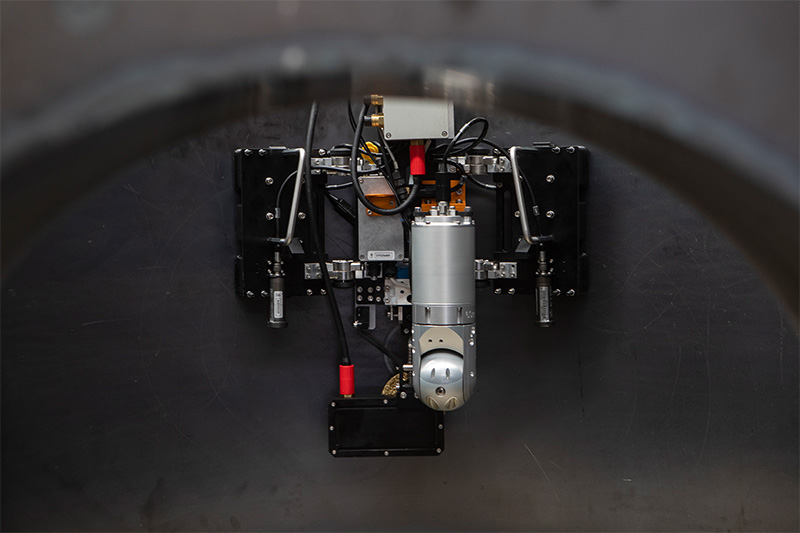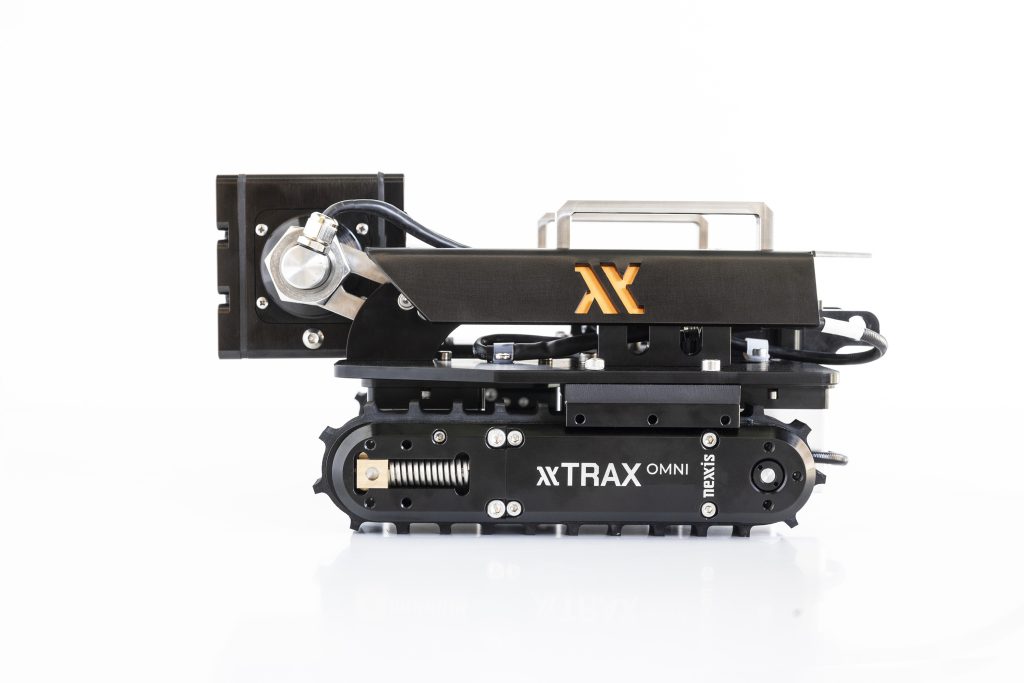Building Digital Inspection Programs of Fixed Assets (Above Ground Storage Tanks) to Increase Force Readiness

As we progress through the 21st century, our need to harness technological advances has never been greater. Whether it is developing Artificial Intelligence to determine crop patterns of the Midwestern United States to thwart the devasting effects of the changing climate to using robotic technology to perform tasks that are deemed too dangerous for humans, our ingenuity to tackle the challenges of tomorrow remains our greatest strength. With this in mind, I propose that we look at developing digital inspection programs to aide not only private industry but also governmental institutions such as the United States Military.
I recently gave a speech at the International Liquid Terminals Association (ILTA) where I spoke on the growing impact of digitalization in the inspection industry and the need to develop programs that could accurately determine deficiencies within critical infrastructure, particularly in above-ground storage tanks and relay that information to decision makers using app-based technology. This technology streamlines the entire cleaning, inspection, and repair process associated with above-ground storage tanks and cuts down on outage times, saving the owners and operators both time and money. This had me thinking that this sort of technology would be of excellent use as a means to improve force readiness for the United States Military. As a Project Manager with a PMP (Project Management Professional) certification and a bachelor’s in Distribution Management and Technology from Baylor University, my job is to make projects run in a timely and cost-effective manner. Having managed inspection projects all over the country including an above-ground storage tank inspection turnaround project at the Boca Chica Naval Base, I firmly believe that having a digital inspection program would increase the operational capacity of your above-ground storage tanks or fixed assets and would decrease your operating costs and lead times.
I’ve often been asked how you should go about building a digital inspection program. During my presentation to ILTA, I mentioned Benjamin Mueller, a Harvard Business Review Contributor. He wrote an article titled Digital Transformation: How to Map Out Your Digital Transformation where he says “If digital transformation is supposed to be meaningful and lasting, companies must think about changes in products and processes more than changes in technology.”. I would like to add one more P to that equation and it is People. To properly implement a digital inspection program, you need to have the right people performing the right processes with the right products. The products and processes will come from Cloud-based technology and tablets that will allow individuals to assess the condition of the tank, upload this information into the inspection app, generate the report and send it to the proper decision-makers within an hour of the tank inspection. This approach is known as the “Digital Scheme”, and it digitalizes information from start to finish. Collecting it digitally allows effective use of the information which means making informed, accurate, and quick decisions based on that digital information. If successful, there should be no need for manual data entry.
One of the greatest aspects of the “Digital Scheme” is that the Cloud-based technology allows an organization to create a digital library where reports can be data mined to observe historical patterns of fixed assets and properly plan how these assets will perform in the future using risk-based algorithms. Digital storage of final inspection reports, as well as all its singular contributing data can be retained in a secure cloud-based system. Ultimately all physical facts including design documentation, historical records, data from instruments, monitoring, and digitized human intelligence should be stored as information in a secure cloud-based platform. In addition to being able to build a digital library, you will also be able to data-mine for information. Configurable data mining can be performed through free text, linear, binary and algorithmic searches.
A digital library can also provide valuable information to artificial intelligence (AI) and machine learning applications. All forms of which can be strategically used to identify common factors and key performance attributes to improve asset performance and condition management. It is typical for an asset to have large amounts of inspection data that are ‘usable’ but not currently being utilized for decision-making. Often inspection activities are completed with the primary purpose of satisfying legal requirements and/or compliance. Digital data enable users to ‘sort through’ all available information and to extract data for trending. For example, trend data may help:
- Determine short-term and long-term corrosion rates
- Provide insight into local damage mechanisms that are found consistently in some regions
- Identify the impact of specific service, built, operational or environmental changes (internal or external) on asset lifetime.
This pertinent information and trending are extremely useful to assist in conducting root cause analysis, determining repair strategy, optimizing asset performance, improving life cycle prediction and evaluating potential life extension.
When implementing a digitalized inspection program, an organization needs to perform a cost/benefit analysis to determine what this inspection program will bring to the table. Some of the main advantages can be listed below:
- Assurance that nothing will be missed by providing built-in quality control – all areas required for inspection are listed and tracked to completion, hence reducing human error.
- More reliable replication of repeatable process, i.e. more consistent results and recommendations. For example, an automated process should help inspectors correctly identify and label ‘common’ damage mechanisms and apply consistent repair recommendations which align with industrial standards and asset procedures.
- Immediate reporting through on-site and electronic delivery of final reports within hours of completion of inspection for expedited repair actions.
- Shorter turnaround for inspection with higher inspection confidence thereby reducing production losses.
System Integration
A digital inspection platform can be designed for full integration between various asset management system interfaces, for example: risk-based inspection (RBI) programs, asset management systems, site maintenance/planning software, etc.
System integration benefits:
- Interactive inspection reports
- Immediate feedback about the condition of the tank
- Immediate feedback about repair requirements
- Can be linked to SAP for job planning (ordering materials, S/D time, repair contractor engagement) or to modify inspection intervals in an RBI program.
Companies and other institutions are building digital platforms now which all future information systems will be built upon. New digital products will be coming out that work with other digital platforms. Therefore, if you do not have one now you may not be able to realize all the benefits of this new environment. As contractors and suppliers also move to digitize, the efficiency and speed of information will pass you by.
Artificial Intelligence – Machine Learning
Real-time machine learning collects additional data to feed into a ‘damage mechanism’ library providing:
– Updated degradation rates
– Trending
, Performance optimization (fill level etc.)
– Asset risk ranking assessment based on available data
– Improvement of inspection schedules
– Assistance in the development of schedules/budgets for targeted inspections based on artificial intelligence assessments.
Speaking with Industry Leaders
I recently had the opportunity to speak to two industry experts (Earl Crochet, a 30+ year veteran of above-ground storage tanks with a background in tank operations and compliance at Kinder Morgan) and Ben Hammell (a 20+ year veteran of above-ground storage tanks currently working for Energy Transfer – Houston Terminal) about the need for digital inspection programs. Both men stressed the need to adapt to 21st-century technology to reduce the costs of tank programs. As Earl Crochet mentioned, for companies and institutions to compete from a digital perspective, they would have to “start digital and stay digital”. He mentioned that during his time with Kinder Morgan, he suggested a digital inspection program back in 1999 but was not able to fully implement it until 2017 due to as he stated “dragging people into the 20th century before you can get to the 21st century.”
Conclusion
As the United States military continues to adapt to the digital age, having a proper digital inspection program of fixed equipment assets is paramount to increased force readiness. By using app-based technology, robotic technology and artificial intelligence to enhance critical infrastructure programs, more timely and precise decision-making can be achieved.
Contact us to find out more about our inspection products, or request a quote online.
Here’s another interesting post about Artificial Intelligence that you may find interesting.

